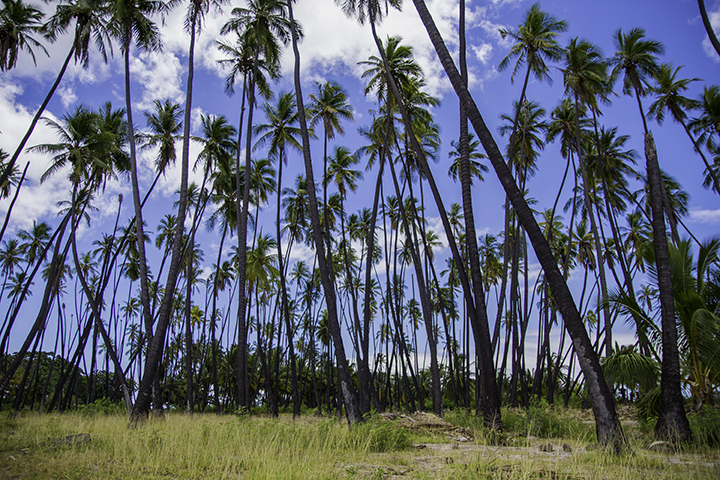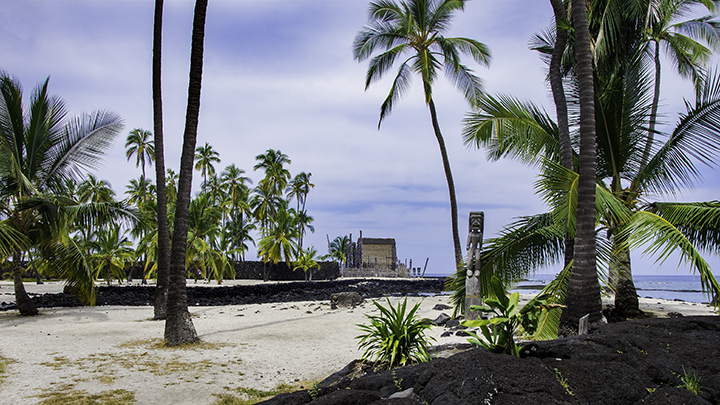Coconuts in Hawaii
The word Hawaii inspires images of coconut trees gently swaying over white beaches and blue waves. This makes it difficult to believe that coconuts are not indigenous to the islands. Polynesian settlers brought these trees to Hawaii hundreds of years ago. And coconuts in Hawaii flourished in area’s tropical climate and lush soil.
The coconut trees or nui in Hawaiian are palms that can reach up to 100 feet in height. Their nuts have a fibrous exterior and can take nearly a year to mature. The palm blooms continually and its nuts have hard inner shells with a soft, meaty interior filled with coconut milk.
Coconut Uses
The interior coconut shell is made of tough, durable material. People used it to make stirring spoons, utensils, brooms, roof shingles, shirt buttons or tools like small shovels. While others used the fibrous outer areas of the nut in canoes as well as in religious instruments. Coconut palm trunks are one of the sturdiest substances around. Some used them in the construction of houses and other such structures.
There are many other uses of the coconut. You can use coconut oil as a moisturizer, for sun burns or in cooking. Also, many body products, such as face soaps and body lotions use coconut as a key ingredient.
People eat coconut meat raw, cooked or in dried shaves called copra. You will find coconut milk and meat in many Hawaiian sauces, marinades and desserts. One of the most popular Hawaiian desserts is haupia or coconut custard. Coconut milk is high in electrolytes and potassium. Because they aid in hydration, such ingredients make it the perfect beverage for Hawaii’s climate.
Coconut meat, oil and milk possess tremendous medicinal benefits. The fats in coconuts help to reduce obesity, heart problems, moisten dry skin and strengthen hair follicles. Coconuts also have vitamins B and C, as well as calcium, iron, potassium and zinc.
Groves of Coconuts in Hawaii
The Pu’uhonua O Honaunau site on the Big Island has a historic coconut grove where visitors can view the trees. There is a large famous grove on Molokai in Kapuaiwa. The Royal Hawaiian Resort in Waikiki has a small coconut grove. While the Kapalua Resort has a 12 acre coconut grove. But anyone viewing coconut trees should always proceed with caution, as falling coconuts are dangerous.
Coconut Festivals
The Kapa’a Business Association in Kauai holds an annual Coconut Festival in Kapa’a Beach Park in October. Here, attendees can enjoy coconut crafts and artwork, playing coconut games, learn how the trees grow and taste foods with coconut. Live music, hula dancing, petting zoo, inflatable bounce houses and coconut dishes make it an exciting outing for all. While the Big Island sometimes hosts a Hilo Coconut Festival in October. Here, children can also get their faces painted, learn traditional dances, listen to songs and bowl with coconuts. At this festival, there are also coconut recipes and drinks for everyone to sample.
Post-a-Nut
On Molokai, visitors can experience a novel way to use coconuts in Hawaii as souvenirs. Through the Post-a-Nut program on Molokai, people can ship a coconut anywhere in the world. At the Ho’olehua Post Office, the post master can help you send someone special a coconut. Visitors can choose an authentic coconut from Molokai, write a message on the shell or paint it with decorative designs. So if you can’t decide what to bring your friends back from Hawaii, you could always post them a little taste of Molokai, fresh from the coconut groves. The price for posting usually costs between $10 and $15.
Awards & Affiliations







